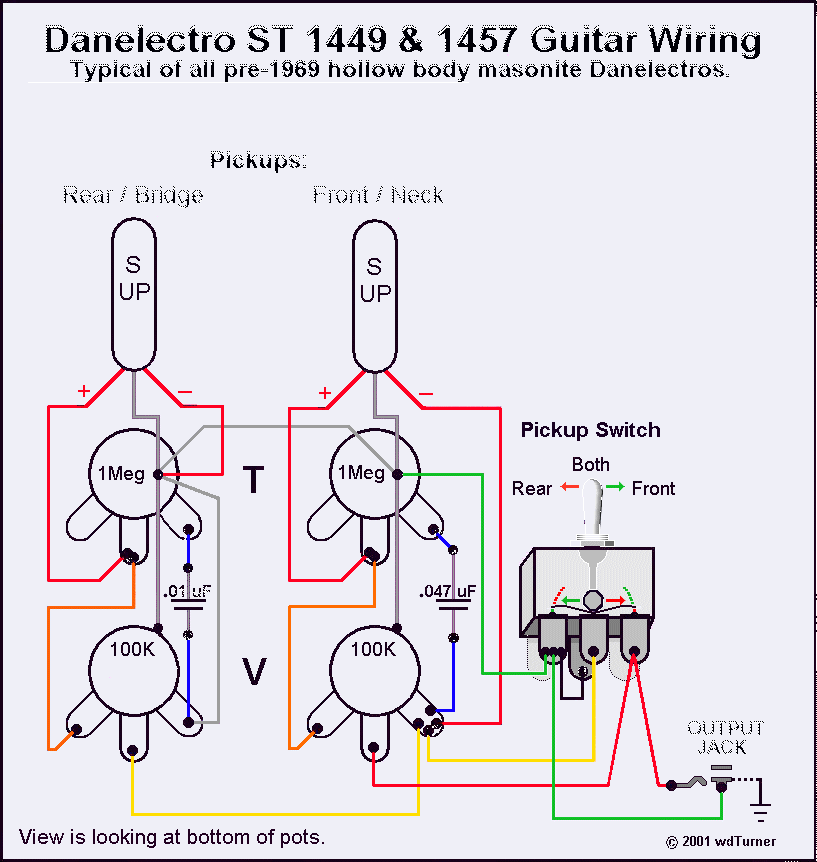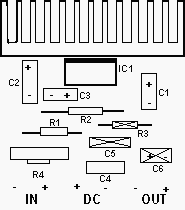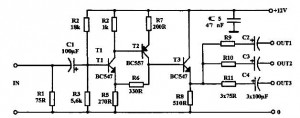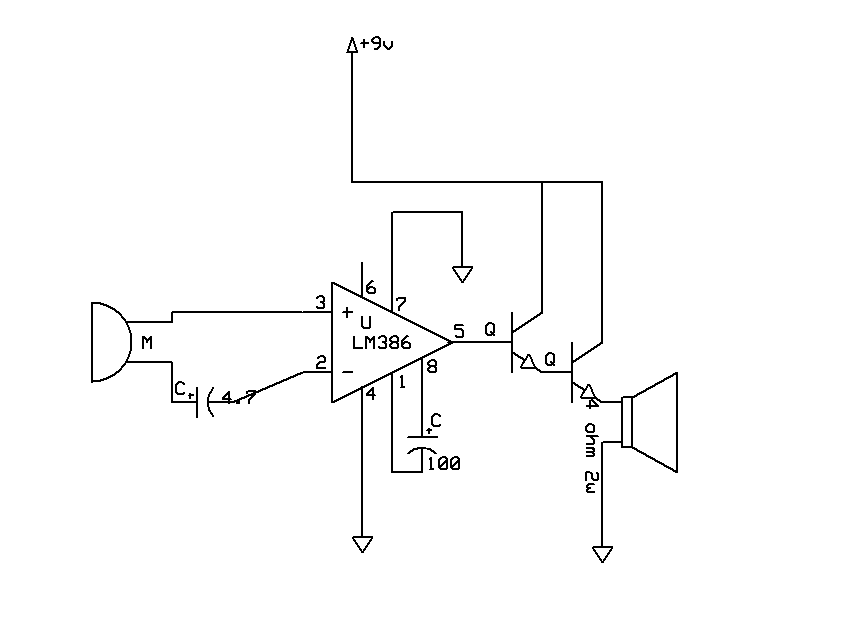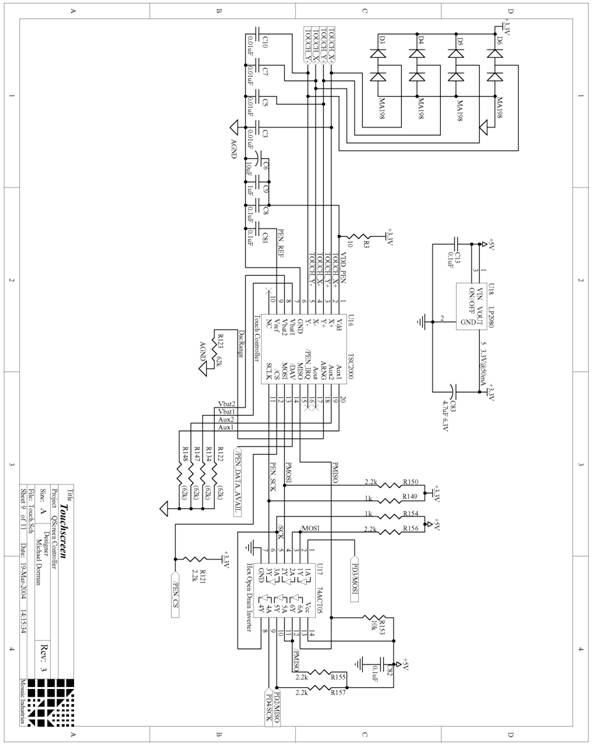
RF2103P schematic configuration of 915MHz RF amplifier
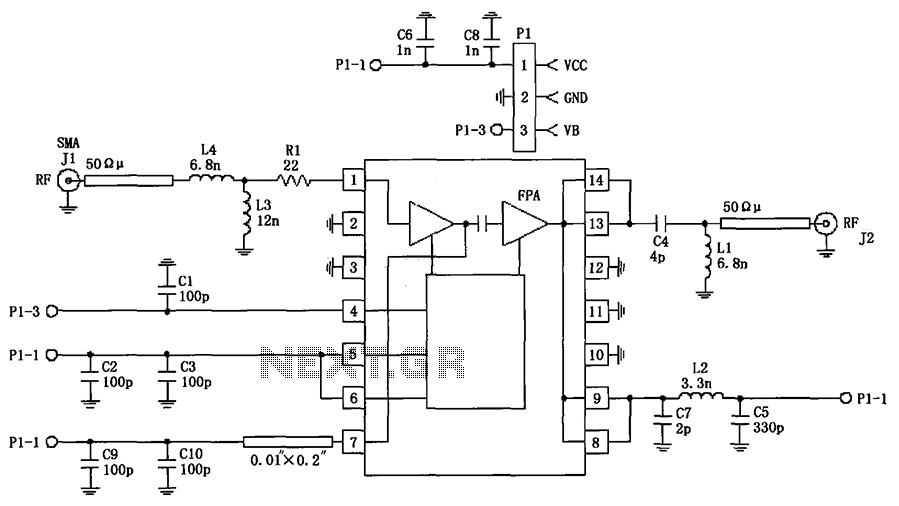
The circuit illustrated in FIG consists of the RF2103P 915MHz RF amplifier circuit. P1 serves as the outlet, where P1-1 connects to power Vcc, P1-2 connects to ground, and P1-3 is used for the power down control voltage VB. J1 is designated as the RF input socket, while J2 functions as the RF output socket.
The RF2103P is a high-performance RF amplifier designed for operation at 915MHz, commonly used in various wireless communication applications. The circuit configuration includes several key components that facilitate its operation.
P1, the power connector, is essential for providing the necessary voltage and ground reference to the amplifier. The Vcc connection (P1-1) supplies the required power for the amplifier's operation, while the ground connection (P1-2) ensures stable reference levels for signal processing. The power down control (P1-3) allows for the amplifier to be turned off when not in use, thereby conserving power.
The RF input socket (J1) is where the input signal is fed into the amplifier. This input stage is crucial as it determines the overall performance characteristics, including gain and linearity. The RF output socket (J2) provides the amplified signal to the subsequent stages of the system or to the antenna, depending on the application.
In addition to these primary components, proper impedance matching is vital for maximizing power transfer and minimizing signal reflections at both the input and output stages. This may involve the use of additional passive components such as resistors, capacitors, and inductors to create matching networks tailored to the specific requirements of the 915MHz frequency.
Thermal management is also an important consideration in the design of the RF2103P amplifier circuit. Adequate heat dissipation mechanisms, such as heat sinks or thermal vias, should be implemented to ensure that the amplifier operates within its specified temperature range, thus maintaining reliability and performance.
Overall, the RF2103P 915MHz RF amplifier circuit is a sophisticated design that requires careful consideration of power supply, input/output configurations, impedance matching, and thermal management to achieve optimal performance in wireless communication systems. As shown in FIG constituted by RF2103P 915MHz RF amplifier circuit. P1 for the outlet, which P1-1 take power Vcc, P1-2 ground, P1-3 then power down control voltage VB; J1 to th e RF input socket; J2 as RF output socket.
The RF2103P is a high-performance RF amplifier designed for operation at 915MHz, commonly used in various wireless communication applications. The circuit configuration includes several key components that facilitate its operation.
P1, the power connector, is essential for providing the necessary voltage and ground reference to the amplifier. The Vcc connection (P1-1) supplies the required power for the amplifier's operation, while the ground connection (P1-2) ensures stable reference levels for signal processing. The power down control (P1-3) allows for the amplifier to be turned off when not in use, thereby conserving power.
The RF input socket (J1) is where the input signal is fed into the amplifier. This input stage is crucial as it determines the overall performance characteristics, including gain and linearity. The RF output socket (J2) provides the amplified signal to the subsequent stages of the system or to the antenna, depending on the application.
In addition to these primary components, proper impedance matching is vital for maximizing power transfer and minimizing signal reflections at both the input and output stages. This may involve the use of additional passive components such as resistors, capacitors, and inductors to create matching networks tailored to the specific requirements of the 915MHz frequency.
Thermal management is also an important consideration in the design of the RF2103P amplifier circuit. Adequate heat dissipation mechanisms, such as heat sinks or thermal vias, should be implemented to ensure that the amplifier operates within its specified temperature range, thus maintaining reliability and performance.
Overall, the RF2103P 915MHz RF amplifier circuit is a sophisticated design that requires careful consideration of power supply, input/output configurations, impedance matching, and thermal management to achieve optimal performance in wireless communication systems. As shown in FIG constituted by RF2103P 915MHz RF amplifier circuit. P1 for the outlet, which P1-1 take power Vcc, P1-2 ground, P1-3 then power down control voltage VB; J1 to th e RF input socket; J2 as RF output socket.
